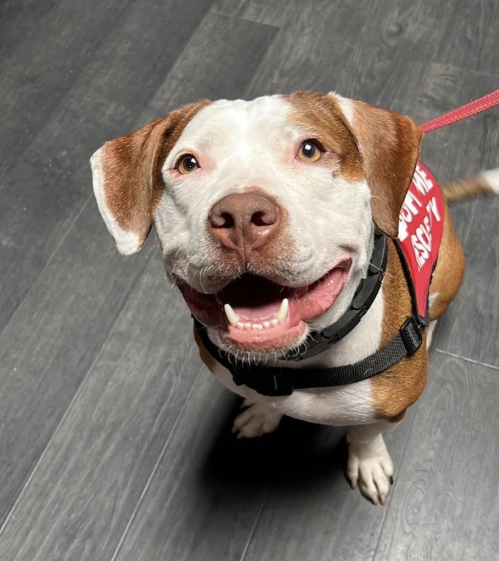Adopting a rescue dog is a rewarding and life-changing experience. Not only do you provide a loving home to a dog in need, but you also make space for more animals in shelters and rescues. However, adopting a rescue dog comes with unique challenges and responsibilities. This guide will help you understand what to expect, how to prepare, and how to ensure a smooth transition for your new furry family member.

1. The Benefits of Adopting a Rescue Dog
There are many reasons why adopting a rescue dog is a fantastic choice for both the dog and your family:
- Saving a Life: By adopting a dog from a shelter or rescue, you're giving them a second chance at a happy life. Many rescue dogs have been abandoned or surrendered through no fault of their own, and they are in need of a loving home.
- Variety of Choices: Shelters and rescues have dogs of all breeds, ages, and temperaments. Whether you're looking for a playful puppy, a calm senior, or a specific breed, there's a good chance you'll find your perfect match.
- Health Benefits: Many rescue organizations ensure their dogs are up to date on vaccinations, spayed or neutered, and treated for any medical issues before adoption.
- Cost-Effective: Adoption fees are usually much lower than buying from a breeder, and they often include initial veterinary care, which can save you money in the long run.
2. Preparing for Adoption
Before bringing a rescue dog into your home, it's important to make sure you're fully prepared. Here's what you need to consider:
- Assess Your Lifestyle: Different dogs have different needs. Consider factors like your activity level, living space, and work schedule to determine what type of dog would be the best fit for your lifestyle.
- Prepare Your Home: Just like you would baby-proof your home for a toddler, make sure your home is safe and comfortable for a new dog. Remove any potential hazards like electrical cords, small objects, or plants that may be toxic to dogs.
- Stock Up on Supplies: Before your dog arrives, make sure you have all the essentials, including:
- Food and water bowls
- A comfortable bed
- Leash, collar, and ID tag
- Dog food and treats
- Toys for play and mental stimulation
- Waste bags for bathroom breaks
- Crate (if crate training)
- Set Up a Safe Space: Create a quiet, secure area where your new dog can retreat and feel safe. This could be a dog bed in a quiet corner or a crate where they can relax and adjust to their new environment.
3. The Adoption Process
Understanding the adoption process can help set proper expectations and prepare you for bringing your new companion home:
- Research Organizations: Look into local shelters, rescue groups, and breed-specific rescues to find reputable organizations.
- Meet Potential Matches: Spend time with dogs you're considering to assess compatibility and temperament.
- Ask Questions: Inquire about the dog's history, medical needs, behavioral traits, and any special requirements.
- Complete Applications: Most organizations require detailed applications and may conduct home visits or reference checks.
4. Transition Tips for Success
The first few weeks are crucial for helping your rescue dog adjust to their new environment:
- Patience is Key: Allow your dog time to decompress and adjust - this process can take weeks or even months.
- Establish Routines: Create consistent feeding, walking, and bedtime schedules to provide structure and security.
- Start Training Early: Begin basic obedience training and house rules immediately, using positive reinforcement methods.
- Monitor Health: Schedule a veterinary checkup within the first week and watch for signs of stress or illness.